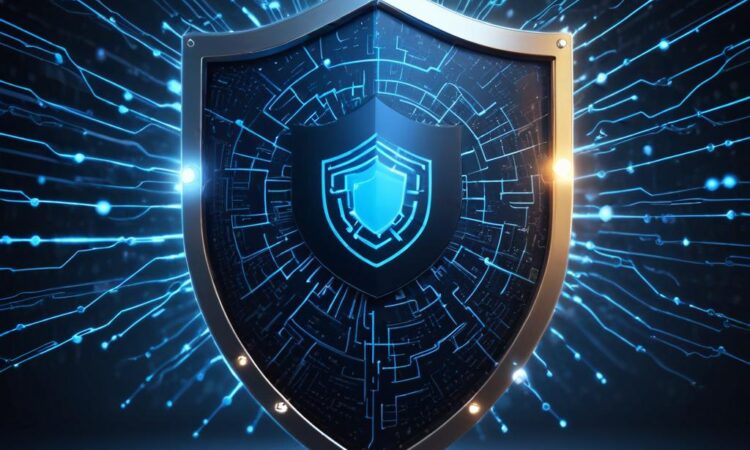Cybersecurity Threats and Defenses: A Growing Challenge
The digital landscape is increasingly complex and fraught with danger. As our reliance on technology grows, so too do the opportunities for malicious actors to exploit vulnerabilities and compromise our systems. Recent months have witnessed a surge in reported cybersecurity incidents, including ransomware attacks, phishing scams, and data breaches, highlighting the ongoing need for robust cybersecurity measures and proactive threat mitigation strategies.
Ransomware Attacks on the Rise
Ransomware attacks, where malicious software encrypts a victim’s data and demands payment for its release, have become a pervasive threat. These attacks have impacted individuals, businesses, and critical infrastructure alike. In recent high-profile cases, attackers have targeted hospitals, schools, and government agencies, disrupting essential services and causing significant financial losses.
The sophistication of ransomware attacks has also increased. Attackers are employing more advanced techniques, such as exploiting zero-day vulnerabilities and using malware that spreads rapidly across networks. This makes it even more challenging for organizations to detect and respond to threats effectively.
Phishing Scams Remain a Major Threat
Phishing scams, which involve deceptive emails, websites, or social media messages designed to trick victims into revealing sensitive information, continue to be a major threat. Attackers often disguise themselves as legitimate organizations or individuals to gain the trust of their targets. Once they have access to credentials or financial information, they can use it for fraudulent activities, such as identity theft or financial fraud.
The effectiveness of phishing scams lies in their ability to exploit human psychology. Attackers often use social engineering tactics, such as creating a sense of urgency or fear, to manipulate victims into clicking on malicious links or providing personal information. With the rise of social media and mobile devices, phishing attacks have become increasingly prevalent and more difficult to identify.
Data Breaches: A Constant Risk
Data breaches, where sensitive information is stolen or compromised, can have devastating consequences. Attackers may target databases, cloud storage services, or other systems containing personal data, such as credit card numbers, social security numbers, or medical records. This information can then be used for identity theft, financial fraud, or other malicious purposes.
Data breaches are often the result of negligence or poor security practices. Organizations need to implement comprehensive security controls, such as data encryption, strong passwords, and regular security audits, to protect sensitive information. They must also educate employees about best practices for handling data and responding to potential security threats.
Mitigating Cybersecurity Risks
In the face of these growing cybersecurity threats, organizations must adopt a proactive approach to security. This involves implementing a comprehensive cybersecurity strategy that addresses all aspects of the digital landscape, from infrastructure to applications to user behavior.
Key Components of a Robust Cybersecurity Strategy:
- Strong passwords and multi-factor authentication: Implementing strong passwords and multi-factor authentication (MFA) can significantly enhance account security and make it more difficult for attackers to gain unauthorized access.
- Regular security updates: Software updates often include security patches that address vulnerabilities, making it crucial to update systems and applications regularly.
- Data encryption: Encrypting sensitive data ensures that even if it is stolen, it cannot be accessed or used by unauthorized individuals.
- Firewalls and intrusion detection systems: Firewalls act as barriers between a network and the internet, blocking unauthorized access, while intrusion detection systems monitor network traffic for suspicious activity.
- Security awareness training: Educating employees about cybersecurity risks and best practices can reduce the likelihood of phishing scams, social engineering attacks, and other threats.
- Incident response plan: Having a well-defined incident response plan in place allows organizations to respond quickly and effectively to security breaches, minimizing damage and restoring operations.
- Regular security audits: Periodic security audits can identify vulnerabilities and weaknesses in security controls, enabling organizations to take corrective action and strengthen their defenses.
It’s also essential to stay informed about emerging threats and vulnerabilities. Organizations can leverage threat intelligence services, participate in cybersecurity communities, and follow industry news to keep abreast of the latest trends and best practices.
The Role of Government and Industry Collaboration
Addressing cybersecurity threats requires a collaborative effort between governments, industry, and individuals. Governments have a role to play in establishing cybersecurity frameworks, developing legislation, and promoting cybersecurity awareness. Industry organizations can share information, develop best practices, and work together to combat emerging threats.
Individuals also have a responsibility to protect themselves and their information. By being aware of common cybersecurity risks, implementing strong security measures, and reporting suspicious activity, individuals can contribute to a more secure digital environment.
Conclusion
Cybersecurity threats are evolving constantly, and organizations must be prepared to adapt and respond. By adopting a proactive and comprehensive approach to security, organizations can mitigate risks, protect their assets, and build a more secure digital future.

